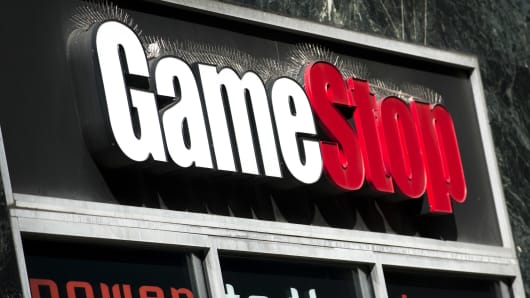GameStop might be the retail sales leader when it comes to video games, but the company's lack of a strong digital arm has always worried analysts.
The announcement, then, that the company has purchased Impulse, a digital distribution service, as well as game streaming service Spawn Labs, is being met with cheers. And GameStop's prediction that it will see digital revenues hit $1.5 billion by 2014 is receiving an even warmer reception.
"GameStop management is doing just about everything right," said Wedbush Securities analyst Michael Pachter. "Both acquisitions [enhance] the overall level of GameStop service, allowing it to better retain its high value customers over the long term."
Today, GameStop sees annual digital revenues of $290 million from video games – far surpassing competitors like Best Buy and Wal-Mart. With the expansion in the digital marketplace, its $1.5B goal isn't particularly aggressive, but company management says that's intentional.
"Our customers are beginning to consume games in a hybrid manner, both physical and digital, so we are becoming a hybrid company to meet their needs," says Tony Bartel, president of GameStop. "Both of these programs are designed to sell more of the games we sell today."
The Spawn Labs service will let customers 'try before they buy,' allowing them to play a small sample of virtually any game (PC or console) on virtually any screen before purchasing a copy digitally or committing to buy a retail version of the title. GameStop is already in talks with television OEMs to provide the service to Internet-enabled televisions, but Bartel says the initial heavy focus will be on tablets.
"Our whole premise is there are a lot of people caught up in the 99 cent fray and a lot of people frustrated by that," he says. "We really believe that's a chance for us to lead the tablet playing field."
Five stores in Dallas have already launched a pilot program allowing users to trade in their tablet devices for store credit. That program will go nationwide later this year when the company begins selling tablet hardware — which can either download games through Impulse or stream them through Spawn.
And Bartel says GameStop hasn't ruled out creating its own tablet.
"If we can work with our partners and the OEMs and they come up with a great table that is enabled with a great gaming experience and coupled with a bluetooth controller, then there's no need to go out and develop our own," he says. "But if we can't find one that's great for gaming, then we will create our own."
Of course, simply buying into the digital space doesn't guarantee a win. The Impulse service faces a significant competitor in Valve Software's Steam distribution service, which is estimated to control 70 percent of the digital PC market.
Bartel says the company considered buying Steam, but ultimately chose Impulse because it felt it could more easily integrate its PowerUp rewards program into the service. Over 8 million people have signed up for that program since its launch 8 months ago – with 5 million of those paying $15 per year for the 'pro' service. By the end of the year, GameStop expects the number to hit between 12 and 15 million.
Those customers spend on average $65 more per person than non-members, according to Lazard Capital Markets, and shop at GameStop twice as often, reflecting why it was so important to integrate that into any digital offerings.
"PowerUp [is] the new 'secret sauce'," says Lazard's Colin Sebastian. "We believe [the program] can help GameStop remain differentiated in the retail market, as well as provide a conduit for jump-starting future digital initiatives."
The big draw for members of the program is GameStop plans to ensure that digital copies of all the games they have previously purchased are available via both of its digital offerings in the near future.
The company's focus on digital expansion will have effects on its retail locations, though. Bartel says GameStop expects zero square footage expansion in the U.S. this year, opening some stores in areas where they are not present, but consolidating others as leases come up.


